The Invisible Man, The Mummy (1932, 1933)
Directed by: James Whale, Karl Freund
Written by: H.G. Wells, John L. Balderston, Nina Wilcox Putnam, Richard Schayer
Starring: Boris Karloff, Claude Rains, David Manners, Gloria Stuart, William Harrigan, Zita Johann
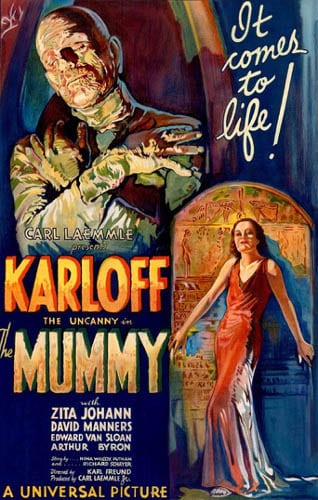
An expedition travels to Egypt to locate the tomb of Imhotep, who was buried alive for committing a terrible crime. In the tomb they find the Scroll Of Life, which can supposedly bring a mummy back from the dead. When alone in the tomb, Bramwell Fletcher recites from the scroll and revives Imhotep, who takes the scroll and disappears. Ten years later another expedition searching for the tomb of Princess Anck-es-en-amon is led to it by a mysterious Egyptian called Ardeth Bey. However, he appears to take rather an interest in the expedition leader’s daughter Helen Grosvenor and Dr. Muller is suspicious as to who he actually is….
It took me a long time to finally get to see The Mummy. On both my first and the second times of seeing many of the Universal horror films in seasons on TV, I caught most of the ’40s Mummy movies but not the original. When I did finally see it, I had built it up to be something it really wasn’t and I was very disappointed with this very slow moving [if slightly creepy] mood piece which had only one brief scene of the Mummy walking, and which made little sense. Of course several years later I gave it another go and discovered that The Mummy is a near masterpiece, with a performance from Boris Karloff that to me equals his portrayal of the Frankenstein Monster, and it’s possibly one of the finest films from Universal’s Golden Age. It’s also one of the strangest, which is perhaps one reason why the movie has never had the same popularity and iconic status as Dracula and Frankenstein, and of course if one thinks of the Mummy, one normally thinks of the monster in the later Mummy movies. Yes, this movie is very slow [though actually no slower than Dracula], and yes, you hardly see the Mummy, but it’s also an extremely atmospheric, clever and subtle film that stimulates the imagination. It’s one of those films that just feeds you enough to interest you, then your mind starts working overtime to fill in the blanks. So yes, you may wonder how on earth a mummy may transform into a normal human being, but it really doesn’t matter at all.
It was inspired of course by the opening of Tutankhuman’s tomb in 1922 and the supposed Curse Of The Pharaohs where people who desecrated ancient Egyptian tombs met with mysterious deaths, though I think writer Nina Wilox Putman was also inspired by an Arthur Conan Doyle story called The Ring Of Thoth. Her original treatment was actually not about Egypt at all but was based on the 18th century magician Alessandro Cagliostro and called Cagliostro. Set in modern San Francisco, it had the wizard as a 3000 year old villain who survived by injecting nitrates. John L. Balderston was chosen to write the actual script and moved the setting to Egypt, though little else was actually changed besides from seem to be almost direct steals from his Dracula script, but more on that later. Karl Freund, who had photographed Dracula, was hired to direct but this production was a difficult one, with Freund clashing so much with star Zita Johann that it climaxed with Johann being forced to act a scene [which was later cut out] with lions where director and crew were all shut up in cages and would have been too slow to help her if she had been attacked. Boris Karloff, to be billed in this film as ‘Karloff The Uncanny’, had to suffer Mummy makeup that took eight hours to apply, only for it to be hardly used in the final cut. I shall go into more detail about the major cut the film suffered later on, but it seems that shots of the Mummy were removed and possibly a few plot details, since there is much that is vague, though I like it like that! Despite being frankly quite odd, it was a huge hit, which makes it strange that there would be no follow ups for almost a decade.
Rather more subtle than Frankenstein and even Dracula, The Mummy rarely goes for the obvious and holds back, more in the manner of the great Val Lewton-produced RKO horror films of the ’40s such as Cat People, but it may also be one of the scariest of the Universal movies, and I can see how it would have terrified people in 1932. The early scene of Imhotep awaking while Bramwell reads aloud the Scroll is a masterpiece of subtlety and wonderfully chilling in that gentle way that films of this sort can still be if you’re in the right mood. All we see are the eyes opening, the arms moving, and then, a few shots later, a bandaged hand grabbing the Scroll and one loose bandage being trailed. Wonderful stuff, and it finishes with some great James Whale-like black humour as Bramwell says to his colleagues, laughing maniacally: “he went for a little walk”. After this the Mummy never walks again in bandaged form, but instead reappears as the fully clothed but truly ancient looking Ardeth Bay, and it’s here where the film really does turn into a partial remake of Dracula. The story becomes very similar, certain scenes play out like scenes in Dracula with just some variation in dialogue, and of course David Manners and Edward Van Sloan play virtually identical roles. It seems that both Balderston and Freund took the opportunity to improve on the earlier film in most respects. A simple but good example is the villain’s eyes. Bela Lugosi had lights shone towards his eyes to show their hypnotic effect, but the lights often missed. Karloff in this movie also has light shone onto his eyes but less often and never missing.
What is totally new in The Mummy is the part of the plot that deals with matters such as reincarnation and love through the ages, and which actually bears a striking resemblance to that in Bram Stoker’s Dracula, with an ageless creature finding someone hundreds of years later who is the reincarnation of his old love. This was originally even more elaborate. There’s a great flashback scene about two thirds of the way through where Ardeth tells Helen to look into his pool and she sees events that happened over 3000 years ago, with Imhotep and Anck-es-en-amon sharing a forbidden love, her dying, him trying to revive her and being mummified alive for his trouble [and keep an eye out for the gruesome shot of soldiers being impaled by spears going right through them!]. The original cut of the film also showed her being reincarnated over the centuries in times and places such as Ancient Rome and Anglo Saxon England. Supposedly this footage slowed the story down so it was removed, but stills survive, and I think it would have given another fascinating dimension to the movie and should have remained in it. The scenes between Ardeth and Helen do have a very odd kind of sexual tension, despite his frightening appearance, and probably aided by her wearing very revealing outfits virtually throughout the whole film. Apart from the revival scene mentioned earlier, generally there’s no humour in The Mummy, but the beginnings of the romance between Helen and her friend Davis may raise a chuckle; it’s silly and pointless, but pleasing still.
The climax to this film seems a little rushed and I’m never entirely clear what Ardeth is trying to accomplish. Overall though I think the script’s steadfast refusal to go into detail about many things really pays off. Of course this is one of those films where you almost want the villain to get the girl, not the hero – after all, he’s loved her for centuries! This is mostly brought about, though, by Karloff’s incredible performance and Jack Pierce’s astonishing makeup. Karloff walks like he really is an animated corpse, as if bones will snap if he does too much, and with his doleful stare [his eyes are as expressive as Johnny Depp’s and have the same sadness] and that lisping voice, he manages to be quite frightening in a way that gets under the skin, and also to be pitiful and a bit sympathetic. He’s a sorcerer who can kill from afar, but he looks and acts like if you push him over, he’ll fall into pieces. Pierce’s creepy makeup really gives him the appearance of one of has endured centuries of torment searching for his lost love. It’s makeup which is going more for the psychological, rather than any attempt at realism. Pierce’s actual Mummy makeup remains probably the best ever – a shame it was used so little, but lots of footage of a Mummy killing people would have disrupted the dreamlike feel of the film.
Freund’s direction is wonderful, with really fluid use of a moving camera, as befits a former cameraman, but he was obviously good with actors too – compare the performances of David Manners and Edward Van Sloan with their portrayals of virtually the same characters in Dracula. The Mummy is the first of these movies to have something pertaining to a musical score. Yes, it’s bloody Swan Lake during the opening credits again, but James Dietrich wrote some effective and atmospheric pieces, sometimes with a slight Arabic touch, for the rest of the film. The music isn’t used that much [a contrast to the way almost constant music would soon become the norm, especially in horror movies], but it works very well when it is. The whole film still works incredibly well too, a weird, haunting tone poem that leaves much for thought. Although it’s the ’40s movies that created the image of the shambling, bandaged menace lurching with one outstretched hand towards either a silly explorer of a woman who may be his lost love, the 1932 The Mummy remains the greatest movie that deals with the concept, and no amount of special effects filled, Brendan Fraser-starring derring-do will change that.
A mysterious man, who has dark glasses and a head completely covered in bandages, arrives at a pub in the English village of Ipping and takes a room. The bad tempered stranger never leaves his room, which he fills with beakers, test tubes and the like, and he pushes both the innkeeper and his wife out the door. Tired of his rudeness, they call the police and, in front of lots of people, the stranger removes first his bandages, then his clothes, revealing him to be invisible. Meanwhile, Flora Cranley appeals to her father to do something about the mysterious disappearance of Dr. Griffin, who was both his assistant and her sweetheart. Griffin was experimenting with a new drug called monocane, which made him invisible. Unfortunately, it also had the side effect of making him insane….

The Invisible Man is a sheer delight from beginning to end, a fast paced, humorous piece of science fiction that some might say isn’t really much of a horror film at all, but which remains wonderfully entertaining, and should be shown as a corrective to those fools who claim old movies are stuffy and boring. Even technically the film holds up, it was one of the pioneering special effects movies, though it makes me wonder why there hasn’t been a recent direct adaptation of the story [there was, of course, Hollow Man, which was kind of a variation] employing all the computer wizardry you can get nowadays, though at the time of writing one is finally in pre-production. The film is exciting and tense, and often very funny too, yet these elements do not jar at all. Although The Old Dark House was in its way a remarkable film, perhaps it was just a little too personal, a little too private, to work one hundred percent, at least for this critic. The Invisible Man though sees director James Whale back at the very top of his form with a fantastic movie that is in some ways a variation on Frankenstein, being another tale of a scientist who Goes Too Far, and some situations are very similar, such as the female lead pining for her missing beau who is lusted after by her friend. This isn’t really a partial remake like The Mummy was of Dracula though, and of course the handling is quite different too, being far lighter and deliberately avoiding the Gothic.
As you have probably noticed, these films tended to be made fairly quickly and in the manner of a production line. When one film was almost completed, another one had normally already started production. It’s a wonder that the films were often of such a high quality. The idea of adapting the Wells book The Invisible Man occurred to Universal not long after the release of Frankenstein, and a total of fourteen treatments were hammered out, one involving invisible plague-carrying rats, one relocating the story to Tsarist Russia and one setting it on Mars! Playwright R.C. Sheriff, who would go on to become a prolific and very good screenwriter in movies, had been brought to Universal to adapt his play Journey’s End for James Whale, and worked on The Old Dark House whilst writing The Invisible Man. Sheriff had the bright idea of returning to the novel and his script, though it added a love interest, stuck quite closely to it. Boris Karloff, unsurprisingly, was originally going to star but soon left the project. It’s not clear why; either it was because he was unhappy at not being seen until the end, or because he was in dispute with Universal about his salary. Karloff’s voice would have added some melancholy to the character, which would have made him more sympathetic, but it wasn’t to be and silent film actor Claude Rains was cast when Whale heard his voice in the next room. The film was another big hit and even Wells liked it, though he had issues with the movie making Griffin mad. Whale replied that the film was made for rational people and that: “in the minds of rational people, only a lunatic would want to make himself invisible anyway”.
The opening is fantastic, with the bandaged Griffin trudging through the snow past a sign showing ‘Ipping Village’, the sense being of tragedy rather than menace, with Griffin perhaps being a sad, sympathetic character like the Frankenstein Monster. This soon changes though, with Griffin turning out to be a rude, obnoxious person, though the scenes of him dealing with the nosy innkeeper and his wife are done more for potential humour than anything else. Much like Frankenstein, the film appears to have started part of the way through the story, though in this case even more so. There’s no build up to Griffin becoming the Invisible Man, he just already is. I’m surprised that the book’s structure was followed here, but it works, creating mystery even though anyone watching the movie, even in 1933, would of course know who Griffin was. Then we come to the scene which would have totally startled audiences of the time, and which is still hugely impressive, especially considering how special effects in old movies can be laughable to modern eyes. Griffin turns to confront the group in his room and first of all rips off his fake nose, saying “here’s a souvenir for you”. Then, as we cut to behind Griffin so we can see the reaction of the onlookers, he unwraps the bandages round his face and removes a wig, revealing nothing underneath. A later sequence is even more impressive, showing Griffin doing the same thing in front of a mirror; this required four different elements of film to be then put together, but the matting is really very good indeed.
This Invisible Man seems at first to be more of a prankster than anything else, stealing a bicycle, pinching people’s noses, and the like. The funniest scene sees a pair of trousers ambling along singing Here We Go Gathering Nuts In May. Whale’s eccentric humour and Wellss sense of an outcast trying to shake things up merge really well in these scenes. It’s not long though, before Griffin’s megalomania takes more and more hold of him, and in scenes Wells obviously did not think of, he robs a bank and causes a train crash, killing two hundred people! This Invisible Man becomes a vicious, brutal menace, seemingly devoid of humanity, sending one guy down a hill in his car with the brakes on. There is a real sense of what an invisible person may have the power to do – this guy can get in anywhere and do anything, though one thing that is perhaps missing is the expected sympathy. Until the very final scene where we briefly see Claude Rains for the first time, Griffin’s madness precludes us from ever really liking him, so when you see the police trying to catch him and laying traps, you actually desperately want them to succeed for once. Despite being something of a travesty of Wells’ original conception, the title character in this movie remains one of the great cinema villains of all time, aided immensely by Rains’ menacing voice which has a real fiendish quality here [he would normally be much softer when he spoke], and his chilling, evil laugh.
The special effects, as I’ve previously said, are remarkable, with other stunning scenes showing Griffin smoking and his footprints appearing in the snow, though the latter is actually a major goof, since Griffin is naked yet it’s shoe prints that are appearing! Never mind. The constantly innovative effects genius John P. Fulton [he parted the Red Sea in The Ten Commandments] would photograph Rains in black velvet against a black velvet background for the scenes where he was to show himself as invisible, while much of the other effects were done with good old wirework. My favourite wire effect has Griffin smoke a cigarette; it really looks very convincing indeed. Supposedly you can see the wires in HD, though on normal DVD playback you can’t; it’s not like for instance the 1953 The War Of The Worlds, where the wires lifting up those Martian machines are extremely obvious in whatever format you see the film in. The model train and car that Griffin destroy look far better than your average film models and blow up real good too. Sadly though it sometimes looks like there are two invisible men, as Rains’ stunt double is rather taller than him and has a far more prominent nose!
Gloria Stuart, who was so good in The Old Dark House, falters somewhat in this movie as Flora, being a little stilted, though admittedly it’s a far less interesting part. Una O’Connor as the innkeeper’s wife pulls faces and shrieks; most people it seems can’t stand her but I think she’s hilarious. Many of the minor characters are colourful and have their moments, such as the police inspector who chases Griffin round a room saying “how can I handcuff a blooming shirt?”, and unlike the dreadful John Bowles in Frankenstein, William Harrigan as Dr. Arthur Kemp the ‘other guy’, the rival for the heroine’s affections, is given a strong character to get his teeth into, a jealous, scheming coward who you can’t wait to get killed off. Typically though, some of the people sound slightly Australian, as American actors pretending to be English often did around then. The Invisible Man doesn’t contain a full music score but does have a virtually continuous piece in the last ten or so minutes by a Heinz Roemheld which is suitably dramatic and slightly tragic. Though made in 1933, this is one of those movies that hardly seems to have dated at all. Instead, it’s almost as fresh, vibrant, clever and downright fun as it must have been upon its initial release.

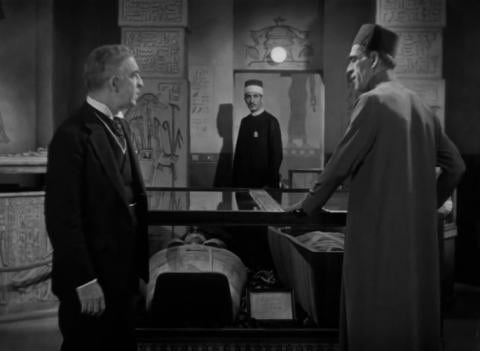
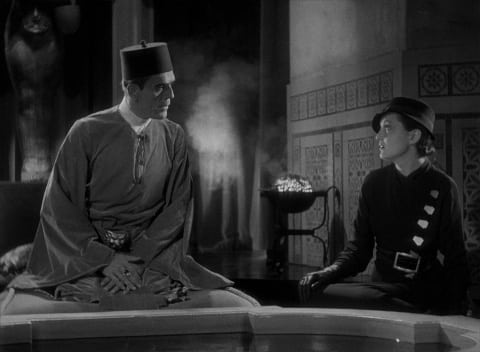


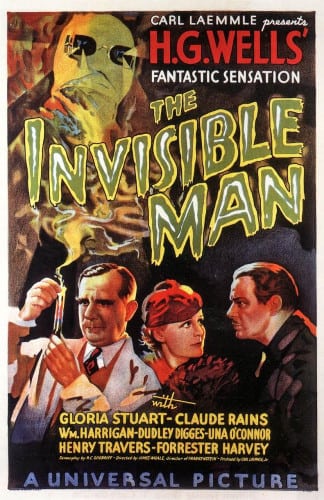


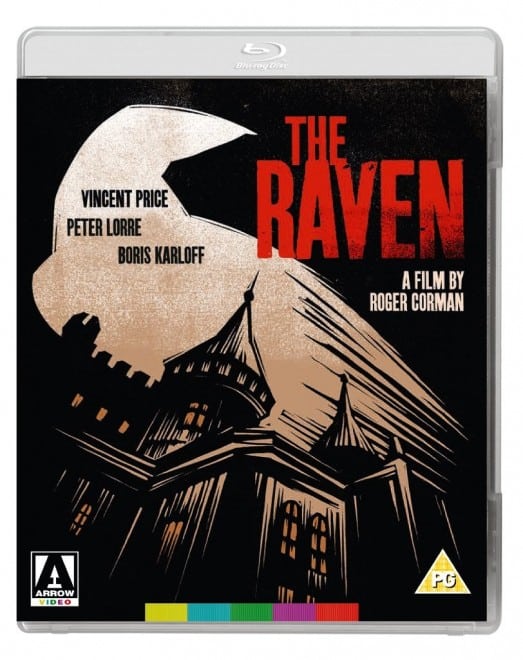
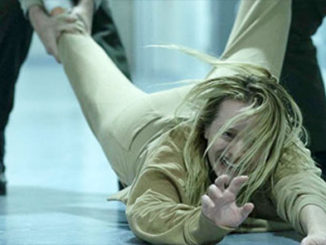
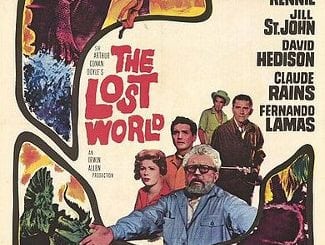
Love your reviews,they make me want to re watch these films all over again,and none more than The Mummy.There’s always been something about this film that always hooks me in,even though it’s somewhat long winded,but your review hit it on the head.One it’s extremely atmospheric,Two Boris Karloff in an outstanding performance,that he was born for.Maybe not quite a Masterpiece,but beyond doubt a classic in the golden age of cinema horror.
Glad you enjoying, I just hope I can keep up the enthusiasm [and length!] when dealing with the umpteenth sequel like House Of Frankenstein and The Mummy’s Curse!